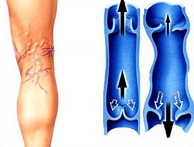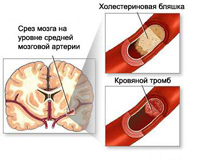The development of the lymphedemy undergo several stages, from the hardly noticeable increase in the limb to progressive edema. Most often, lymphostasis occurs in young women who progressing leads to the emergence of physical suffering, psychological injury and even disability.
Content
Causes of secondary lymphostasis
Secondary lymphostasis occurs in diseases or injuries of a normally developed lymphatic system. The reasons for secondary lymphostasis may be as follows:
- infections (mainly staphylococcus) and parasitic (more often in hot countries)
- Injury, which leads to damage to lymphatic vessels and lymph nodes (burns, radiation irradiation, mechanical damage)
- Benign and malignant tumors of the lymphatic system
- Yatrogenic (during the operation, when it is purposefully removed or irradiated lymph nodes, when removing a cancerium tumor)
Stage of flow of lymphostasis
 Most often, young women suffer from lymphostasis. Progressing, lymphostasis leads to constant psychological injury, physical suffering, and in the future and to disabilities.
Most often, young women suffer from lymphostasis. Progressing, lymphostasis leads to constant psychological injury, physical suffering, and in the future and to disabilities.
In its development of lymphedem (lymphostasis) there are several stages of development. Limiting lymphostasis is barely noticeable, as a rule, independently passes. There is a small, barely noticeable progressive swelling, to which patients get used to, and which they do not notice. No pain arises.
First stage of lymphostasis
The first stage of lymphosase is a spontaneous reversible (soft) tissue edema. When progressing the lymphostasis, swelling becomes noticeable, you can press it with a finger. The patient notes an increase in the amount of limb. In the morning swelling significantly decreases, while in the evening swelling appears again. In this stage of lymphatastasis, the patient rarely appeals to the doctor, but already begins to bistencate the elastic limb, apply folk remedies, iodine mesh.
If you consult a specialist in time, then under the influence of vetonic and elastic compression, edema can pass. In this stage, connective structures have not yet developed, and on time began treatment can completely stop the progression of the disease. Manual lymphatic massage, pneumocompression and rational selection of compression knitwear will allow control of disease progression.
Second stage of lymphostasis
Spontaneous irreversible swelling, more launched stage of lymphostasis (lymphedems). Later, the skin rejection occurs through the growth of connective tissues, and the swelling is no longer mild. When pressing the fabric remains a hole. Elastically stretched skin is already felt sick, stronger tension can lead to pain. Pouring sensations are most often a reason to appeal to doctors. However, treatment in this stage is quite complex and more requiring great efforts from a doctor and patient. Various methods of lymphatic massage, bandage, elastic compression are used;. With a positive patient and long-term persistent treatment - success is provided.
Third stage of lymphostasis
In this stage, irreversible swelling, fibrosis develops, cysts appear. The affected limb loses the contour due to the growth of altered tissues, the elephant stage occurs - the extreme stage of lymphostasis (lymphedems). Limitations of mobility may occur due to the increasing weighting of the limb, the development of installation contractures (traffic violations in the joints), deforming osteoarthrosis, which leads to a violation of the limbs.
With a far-seated violation of lymphootock, complications are joined, which, in the absence of adequate treatment, can accompany all life - cellulite, corrosive inflammation, micaosis, eczema. Less often tumor transformation - lymphoangiosarcoma. Considering the fact that lymphostasis accompanies many diseases, in the event of the latter, an early appeal to a specialist is recommended.








